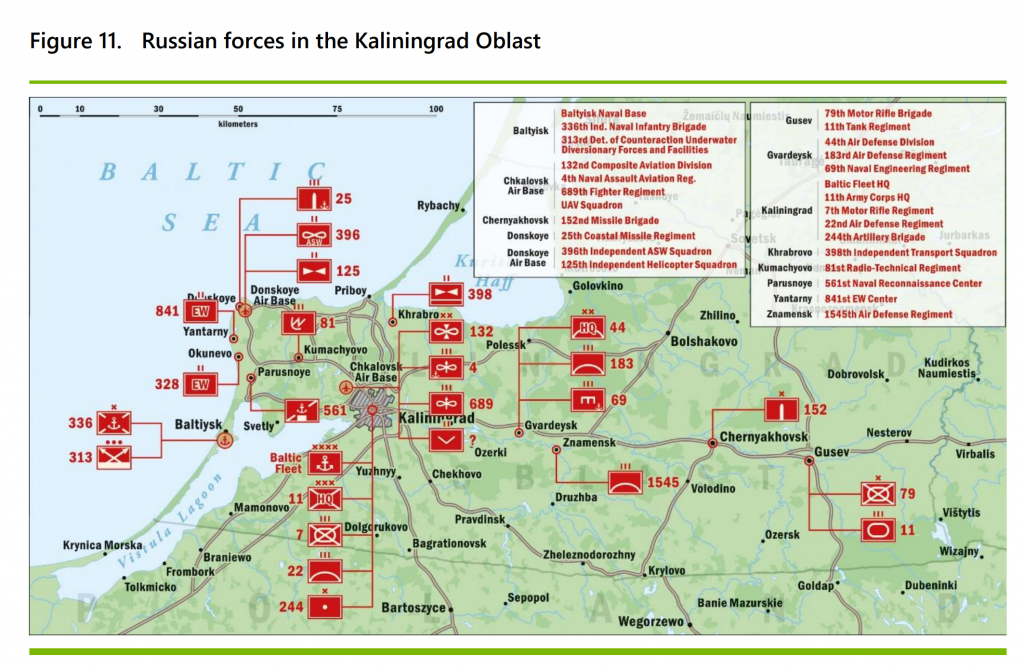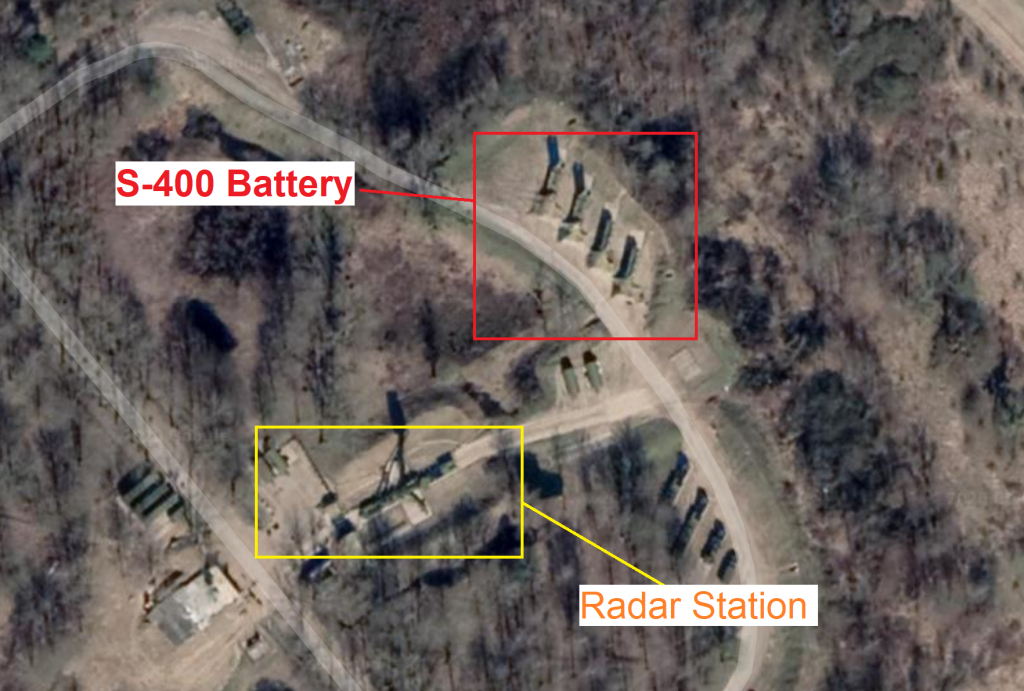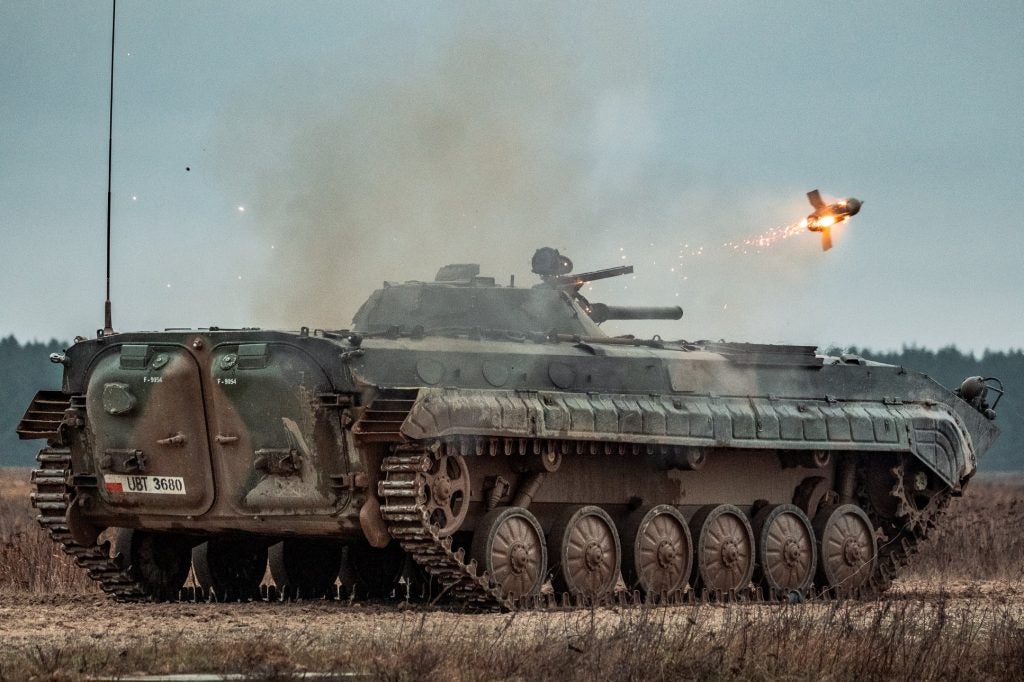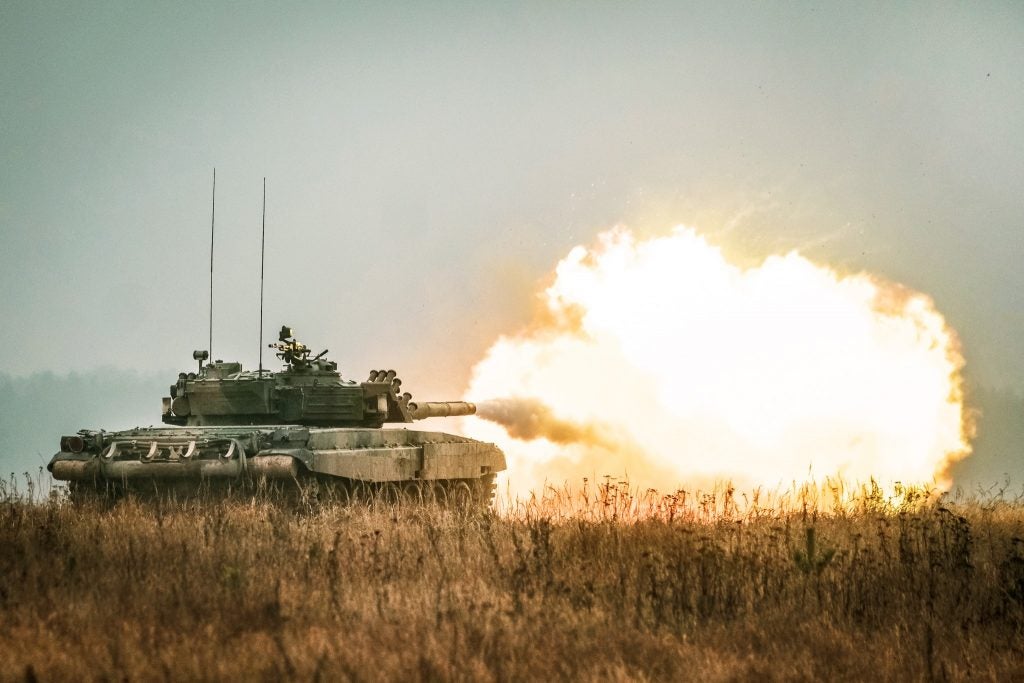Kaliningrad Gambit – NATO Preemptive Strike Scenario
The city of Kaliningrad (Королевец) is populated by almost 500,000 citizens. It is the capital of the Kaliningrad Oblast, the most westernized and liberal part of Russia, that is an exclave with no connection with the rest of the country. Russians who live there are known to work in Poland where wages are much higher than those in their homeland. Many of them used to shop in Polish markets too, as many products are simply not available to them in Russia. However, besides this friendly exchange of work, capital and goods, the Kaliningrad region hosts almost 50,000 Russian troops and a number of Iskander short-range ballistic missile (SRBM) launchers, which are capable of delivering tactical nuclear strikes on the NATO forces located in East Germany, Poland, and Czechia. There are rising concerns over the alleged presence of nuclear weapons stockpiled in Kaliningrad Oblast.
Western Military District Forces in Kaliningrad

Baltic Sea Fleet – Vice-Admiral Aleksander Mikhailovich Nosatov – Kaliningrad Oblast
11th Army Corps – General Major Yuri Yarovitsky
Kaliningrad, Kaliningrad Oblast,
-> 7th Guards Separate Motor Rifle Regiment
Kaliningrad, Kaliningrad Oblast,
-> 79th Guards Separate Motor Rifle Brigade
Gusev, Kaliningrad Oblast
>>> 11th Tank Regiment
Gusev, Kaliningrad Oblast
>>> 244th Guards Artillery Brigade
Kaliningrad, Kaliningrad Oblast,
>>> 152nd Guards Missile Brigade
Chernyakhovsk, Kaliningrad Oblast,
>>> 22nd Anti-Aircraft Missile Regiment
Kaliningrad, Kaliningrad Oblast,
-> 336th Naval Infantry Brigade
Baltiysk, Kaliningrad Oblast,
>>> 69th Naval Engineering Squadron
Gvardeysk, Kaliningrad Oblast
-> 44th Air Defense Division,
Gvardeysk, Kaliningrad Oblast
>>> 183rd Air Defense Regiment
Gvardeysk, Kaliningrad Oblast
>>> 1545th Air Defense Regiment
Znamensk, Kaliningrad Oblast
[Unit assignment according to C. Harris and F.W. Kagan, ‘Russian Military Posture: Ground Forces Order of Battle’, Institute for the Study Of War, March 2018 and K.Muzyka, Russian Forces in the Western Military District, Rochan Consulting, CNA, December 2020]
The 50,000 soldiers of the Russian Armed Forces stationed in the Oblast are divided into three separate units. This an essential issue for NATO’s connection with the Baltic States via the Suwalki Gap. However, it is also an issue for the Russian themselves. In case of a conventional conflict in the Baltic States, both 7th Guards Separate Motor Rifle Regiment and 79th Guards Separate Motor Rifle Brigade would likely push towards Lithuania, leaving the 336th Naval Infantry Brigade to defend the region. If not, the 11th Army Corps would be forced to disperse its forces along the border to defend the Kaliningrad Oblast.
On the other hand, the supply of Russian troops in Kaliningrad takes place via the Baltic Sea. Russians rely strongly on an uninterrupted logistical chain from St. Petersburg to Baltiysk. We will come back to this subject further in the article, but it is a point worth noting.

The key issue here is the presence of the Russian S-400 systems operated by the 22nd Anti-Aircraft Missile Regiment. Their range covers most of Poland’s Polish air space, actively threatening any NATO air support to the region. The Polish Air Force is working on a solution against the A2/AD systems, but it will take a while to introduce it.
Polish Offensive Forces
In the event of a conflict, local Polish forces which may threaten
Kaliningrad include:
->16th Pomeranian Mechanized Division
>>> 9th Armoured Cavalry Brigade
Braniewo, Mazury
>>> 15th Mechanized Brigade
Giżycko/Orzysz, Mazury
>>>20th Mechanized Brigade
Bartoszyce, Mazury
>>>11th Artilery Regiment
Węgorzewo, Mazury
>>>15th Anti-Aircraft Missile Regiment
Elbląg, Mazury
-> 25th Air Cavalry Brigade
Tomaszów Mazowiecki, Mazovia
-> 6th Airborne Brigade
>>> 6th Airborne Battalion
Kraków, Lesser Poland
>>> 16th Airborne Battalion
Kraków, Lesser Poland
>>> 18th Airborne Battalion
Bielsko-Biala, Silesia
-> Special Operation Forces Component
>>> GROM Military Unit
Warsaw, Mazovia
>>> Commando Military Unit
Lubliniec, Silesia
>>> Foromoza Military Unit
Gdynia, Pomerania
>>> AGAT Military Unit
Opole, Silesia
>>> NIL Military Unit
Kraków, Lesser Poland
-> Combined Mechanized Division (the most valuable and capable units)
>>> 1st Armoured Brigade
Wesola, Mazovia
>>> 17th Mechanized Brigade
Międzyrzecz, Lubusz
>>> 12th Mechanized Brigade
Szczecin, Western Pomerania
>>> 21st Podhalan Rifleman Mechanized Brigade
Rzeszów, Podkarpacie
>>> 23rd Artillery Regiment
Bolesławiec, Lower Silesia
>>> 4th Missile Anti-Aircraft Regiment
Czerwińsk, Lubusz
The mustering of the Polish forces in this scenario is optimistic but possible. The Combined Mechanized Division component would comprise of the newest and best-equipped units suited for a fast strike. Under such conditions, we are talking about a force of around 30,000 soldiers. Nonetheless, there are weaknesses visible. The 16th Mechanized Brigade is equipped mainly in the post-Soviet BMP-1 and outdated systems. Then, there is the issue of an insufficient transport plane fleet to insert the 6th Airborne Brigade.
The strongest and most reliable forces would be the 1st Armoured Brigade comprising of Leopard 2A5 and new Leopard 2PL, the 17th Mechanized Brigade equipped fully with Wolverine IFVs, and the SOF Component comprising of two units able to perform amphibious insertion and raiding (GROM and Formoza) with the addition of Polish Commandos specializing in diversion behind enemy lines. The positive factor is the fact that the 1st Armoured Brigade would have more tanks than the projected 30-90 T-72B3s of the 11th Tank Regiment and remaining T-72B1s placed in Kaliningrad.
Four Primary Targets
In this scenario the attacker has four main goals to fulfil:
1. Neutralize the SRBM launchers and Russian capacity to use nuclear weapons in limited nuclear warfare.
2. Cripple the Baltiysk port infrastructure and Baltic Fleet ships present there to prevent any counter-action.
3. Destroy A2/AD systems of S-400 present in the region.
4. Liquidate Russian Forces in Kaliningrad to secure the Baltic States and Suwalki Gap.
Speed and surprise would be essential here. The Polish Armed Forces position is not an easy one, to begin with. Forces mustered at the Russian border have to cross a heavily wooded area full of lakes. The dislocation of the Russian Armed Forces would be to the Polish advantage if the 79th Guards Separate Motor Brigade remains in Gusev. Yet, the displacement of Russian artillery and a concentrated barrage could effectively bog down the Poles before even crossing the border.
Neutralization of Iskanders

The SRBM launchers pose an immediate threat to NATO forces and neighboring states. With the suspected presence of the nuclear warheads placed in Kaliningrad, a swift operation to destroy Russian launch capability is essential. In this case, the insertion of Polish SOF seems an option. ‘Iskander Hunter’ teams, similar to those used to hunt Iraqi Scud launchers during the Gulf War, would infiltrate sites and call in precision artillery or missile strikes on Iskander battery locations.
A second method would be a pre-emptive missile strike on bases and magazines that could contain Iskanders and rockets, including the Kaliningrad nuclear stockpile magazine.
Blockading Baltiysk

A blockade of the port of Baltiysk is a matter of current discussion.
Poland is equipped with NSM Anti-Ship Missile batteries with an offensive range of 400km. Additionally, conventional artillery, in form of 155m Self-Propelled Howitzers, has the range to hit Baltiysk. In this case, the Baltic Fleet of Russia could be terminated in the long-run. Incapable of sailing from Baltyisk, vulnerable to artillery fire, both the ports infrastructure and ships would be out of commission. In addition to that, Estonia is also a user of NSM missiles that cover the Eastern Baltic Sea with their range. It means a total blockade of sea supply routes to Kaliningrad, forcing the Russians to conduct a large scale offensive in order to break through to the 11th Army Corps.
Destruction of A2/AD
In order to paralyze the Russian air-defenses network, a swift strike is a necessity. The S-400 can be crippled in the same way as Iskanders, however, the proximity to the Polish forces allows for a direct strike with the use of WR-40 Langusta self-propelled multiple rocket launcher systems, able to strike targets at long ranges. The elimination of Russian A2/AD opens the skies for air attacks against the forces trapped in the Kaliningrad kettle, eliminating heavy equipment and crippling the defensive capabilities of mobile motorized units. The use of UAVs in order to identify targets for artillery strikes would be optimal.
Liquidation of the Kaliningrad Pocket

The last step towards achieving a decisive victory in the region and fulfilling the strategic objectives is to destroy remaining Russian force elements. The elimination of a pocket of considerable enemy forces allows the protection of the Baltic states and enhances the defensive attributes of NATO’s eastern flank considerably. Removing a pocket of enemy forces from within NATO’s own lines fewer forces would be required to defend the frontline, with the port of Gdansk and Gdansk Bay safe from the enemy. Bal and Bastion Anti-Ship Missile Batteries near Kaliningrad would be put out of action, opening the area for naval operations and securing Central Baltic for NATO ships.
The Other Options
Any other plan for setting up a defense line along Suwalki Gap shows that in case of a conventional war US forces would be severely beaten. Last year Marine Corps War College conducted a wargame in which the Polish forces defended the Suwalki Gap line. Within the first hours of the conflict, the Poles were battered, losing a majority of their forces. The RAND wargames showed that in case of a global conflict, US troops would lose the fight in the Baltic States. Even Gen. Ben Hodges was terrified with the ease of US forces being overrun within 48 hours in the region.
In this case, NATO would not stand as a mere defender but would have to conduct a preemptive strike to drive out the Russians from the territorial exclave. Whether the kettle situation occurs, depending on the performance of the land forces, any operation, in order to do so has to be executed quickly, violently, and without losing the element of surprise. The NATO forces in the Baltic States would have to delay the Russian attack towards Kaliningrad for as long as it is possible. In contrast the Russian forces would have to be capable of entering the Baltic States quickly. According to C. Harris and F.W. Kagan, in their paper Russian Military Posture: Ground Forces Order of Battle, the dislocation of Russian mechanized units along the Latvian and Estonian border suggests a readiness for a limited hybrid conflict, not a full-scale war.
Conclusion
Whether the risk is worth taking depends on other factors, but any action weakening the Russian Armed Forces within the first days of any conflict may be crucial for the future of the war in Central Europe. After completing the tasks stated above, a slow and planned retreat to the Vistula River line should be commenced in order to shorten the supply lines and gather troops on terrain suitable to the defender. We must remember that the vast plains of Poland are perfect to conduct armored operations. Frontlines would most certainly be drafted on the main rivers from Bug to the Elbe.
Today a full-scale war is rather an unlikely scenario. The Gerasimov strategy of the Russian Federation focuses on expanding the Kremlin’s influence through limited proxy wars with the support of army components. Adding the Russian financial situation which excludes the possibility of prolonged conflict participation, it is safe to state that this threat of global nuclear war is, thankfully, not a matter of foreseeable future.
The opinions expressed in this editorial are those of the author and may not necessarily reflect the opinions or views of Overt Defense

